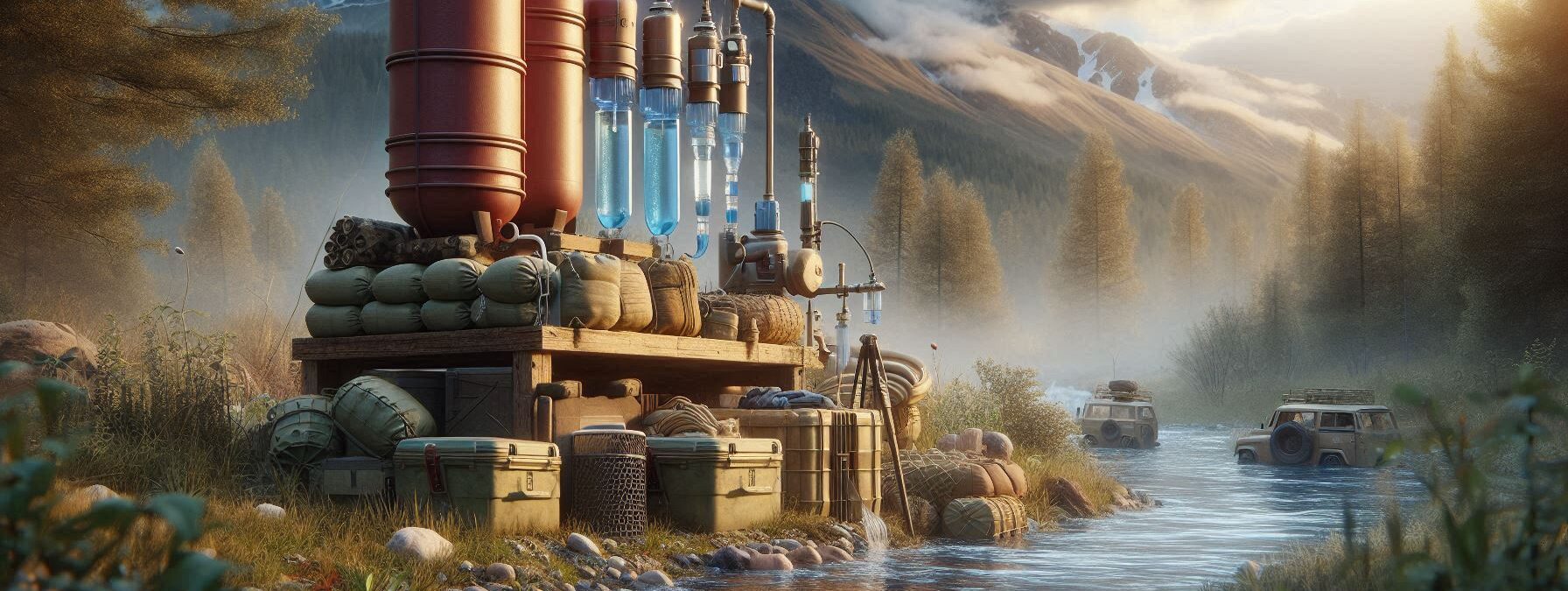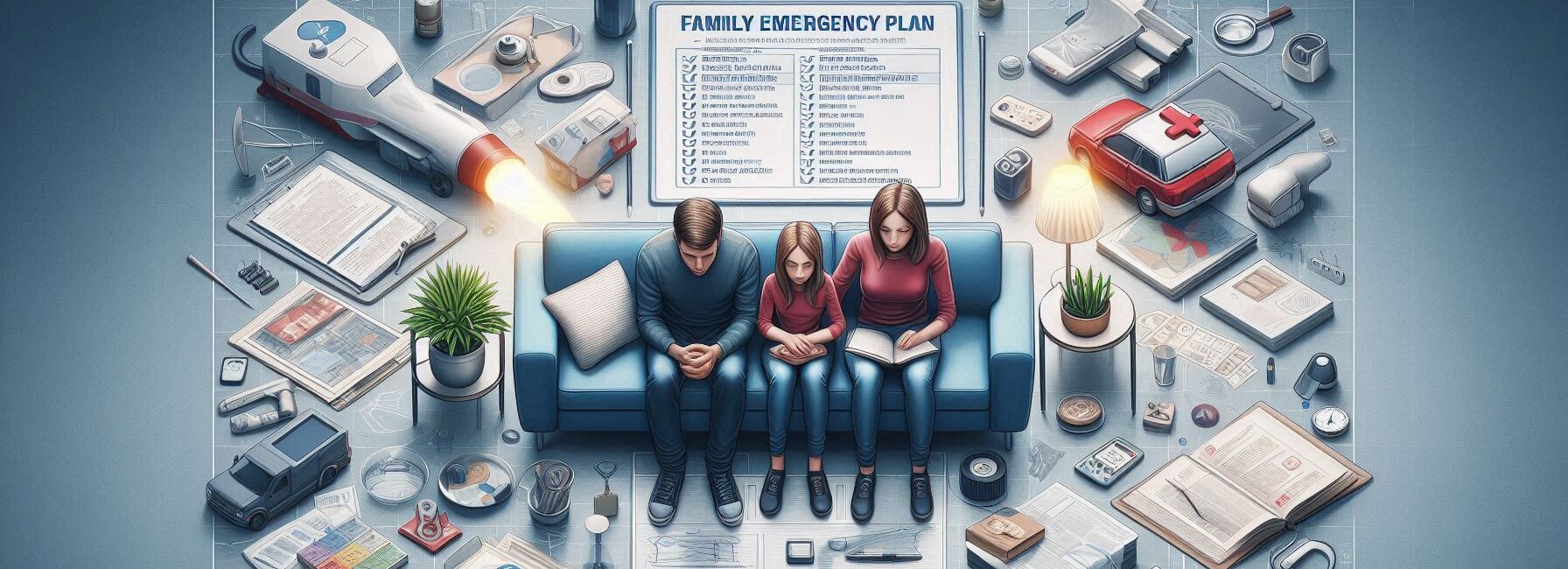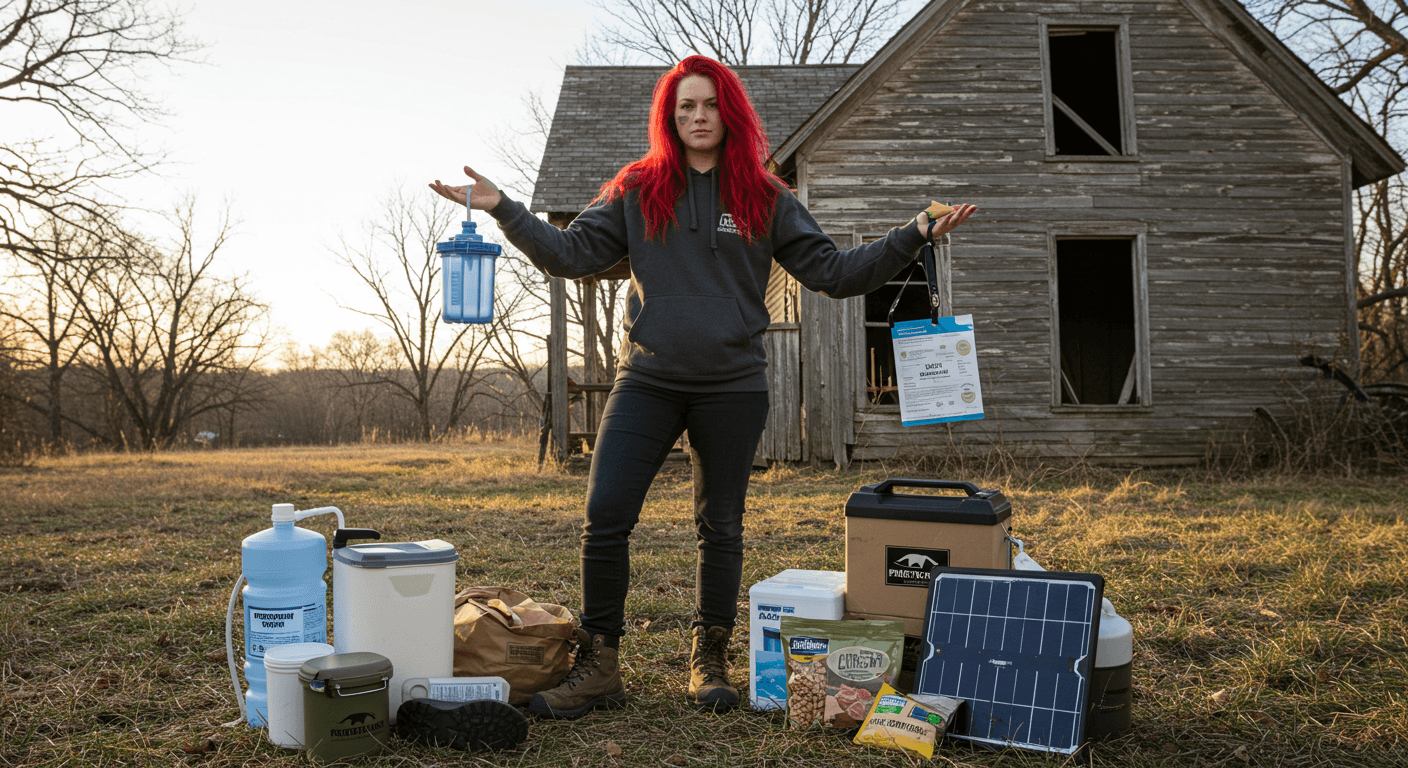Last Updated on November 1, 2025 by Kevin Collier

Top Takeaways and Key Concepts
- Choose Shelf-Stable Staples: Stock rice, oats, pasta, dry beans, and canned goods for longevity.
- Use Airtight Containers: Store in Mylar bags with oxygen absorbers or sealed buckets.
- Maintain Proper Storage Conditions: Keep in a cool, dry, and dark environment to prevent spoilage.
- Rotate Your Stock Regularly: Implement a first-in, first-out system to ensure freshness.
- Plan for Nutritional Balance: Include a variety of foods to meet dietary needs.
Running low on food is a scary thought. You’re digging through your pantry, and all you find are sad pickles and some old ramen. Not the best dinner choice, right?
Please Note: This post may contain affiliate links. If you click one of them, we may receive a commission at no extra cost to you. As an Amazon Associate, I earn from qualifying purchases.
Let’s get ahead of that! Building a solid food storage system can feel like a fun puzzle. It doesn’t have to be complicated, either. You just need a plan and a little motivation.
Start with good containers. Sturdy bins and jars are your best friends. Make sure they close tight. You want everything fresh and safe from little critters that sneak in. It's like creating a tiny fortress for your food.
Next, think about what foods you want to store. Canned goods, dried fruits, or even grains like rice and beans work great. They’re long-lasting and can be yummy in many dishes. Plus, they give you energy when you need it most. If you’re feeling adventurous, add some fun snacks too. Who doesn’t love a tasty treat during a campfire?
Label everything! You’ll thank yourself later. Write down what’s inside and the date. That way, you know what to use first. No surprises lurking in the back of the cupboard.
Check your stash every few months. Just pop in and see what’s good. Keep an eye on expiration dates. If something’s close to going bad, use it up in a recipe or share it with a friend. It feels good to clear things out and help someone else too.
Putting in just a little effort means no more surprises come dinner time. You’ll be set and ready for anything life throws your way. You’ll eat well and enjoy every bite. Plus, you’ll feel like an expert prepper, even if you mostly just love tacos.
So, grab those containers, fill ‘em up, and let’s make sure your pantry is a happy place!
*** Shop for Survival Gear - Tools - Kits ***
Survival Gear - Bags and Backpacks - Knives - Boots/Footwear - Communication
Outdoor Cooking - Gloves - Hydration - Dry Boxes - Water Filtration Systems
Tents - Sleeping Bags - First Aid Kits - Multi-Tools - Flashlights - Fire Starters
Navigation - Survival Food - Night Vision - Headlamps - Stun Guns - Binoculars
Understanding Your Food Storage Needs
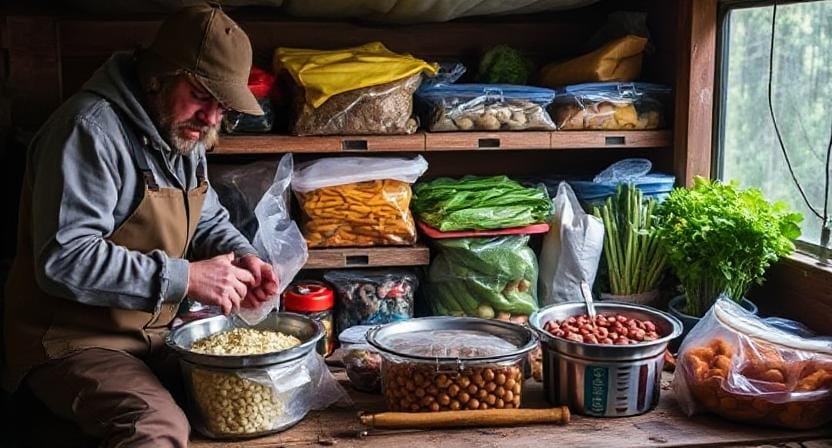
First things first: what do you really need to keep? Are you getting ready for the end of the world or just trying to avoid going to the store every week? It's easy to go too far when you're getting ready for the end of the world, like your great-aunt Edna who collects ceramic frogs.
To figure this out, first look at how many people are in your family and what they like to eat. Do your kids think broccoli is a punishment?
Or are you teaching your kids to be brave eaters who will eat anything as long as it doesn't look like green mush? If you know what your family eats a lot of, it will be easier to decide what kinds of food to include in your stockpile.
Next, think about how long you want your food storage system to survive. Are we talking about months or years? You're going to need more than just some cans of soup from 1998 (which I think are still in my mom's cellar) if it's going to take years.
Think about things that don't go bad, such grains, beans, freeze-dried meals, and other treats that will last a long time and maybe even taste nice when you consume them!
Picking the Right Containers
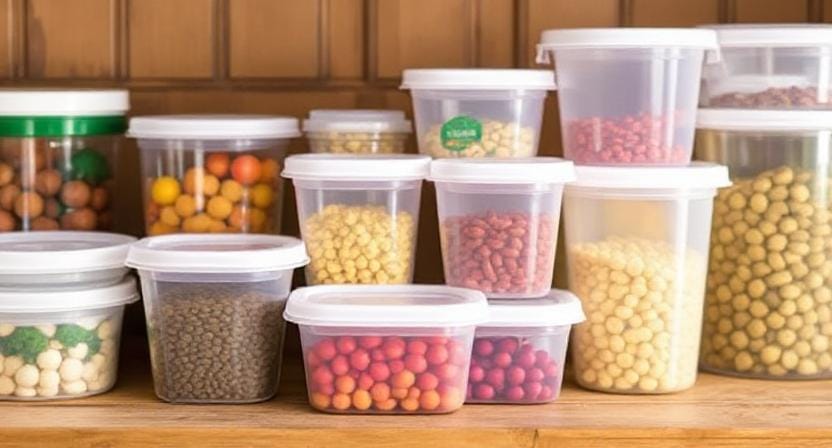
Let's discuss a bit about containers now that you know what meals you'll be keeping. You wouldn't put a valuable old thing in a cardboard box that said “Miscellaneous Junk,” would you? Your food is the same way!
It's really important to get good storage containers. I really like airtight buckets with gamma seal lids. These things keep bugs and moisture out and keep your food fresh longer than my New Year's resolutions!
And don't forget about labels, by the way! Trust me, future-you will be grateful that you didn't open a bucket labeled “Rice” and find powdered cheese from 2015 inside.
If you're feeling fancy (or have a lot of free time), vacuum sealing is another great approach to keep smaller servings fresh. Just picture taking out nicely wrapped packets in an emergency. It's like holding a little celebration when everyone gets enthusiastic over dried beans!
Making a System That Works
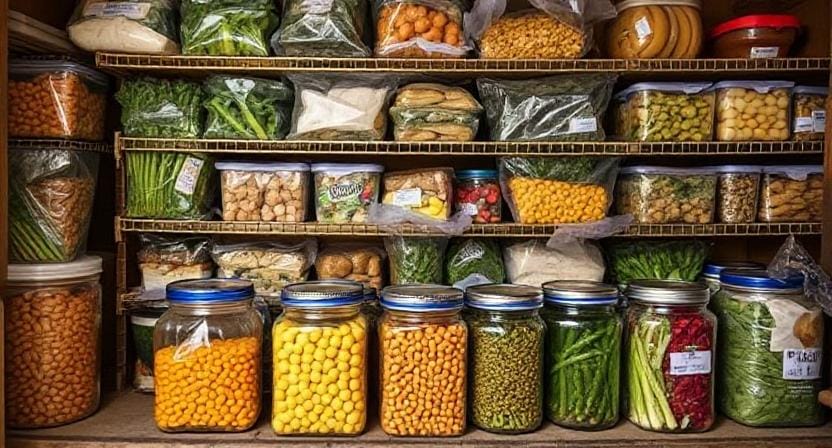
It's important to make a system that works for you once you've put everything away neatly (and yes, I know that not everyone likes to organize). Honestly, nothing is worse than going through mountains of food like you're looking for lost treasure but just finding sad small cans at the back.
You might want to use the FIFO method, which stands for “first in, first out.” This involves putting newer things below older ones so that those old cans don't become forgotten artifacts from a different time, like disco music.
It also helps keep things from going bad because you'll be moving things around constantly instead of letting them go bad on their own after being left alone for too long.
Also, set aside some shelves or locations in your home just for storing food. This not only keeps everything in order, but it also makes it quick to get to in case of an emergency or when guests come over without warning and you need snacks right away!
Checks for Regular Maintenance
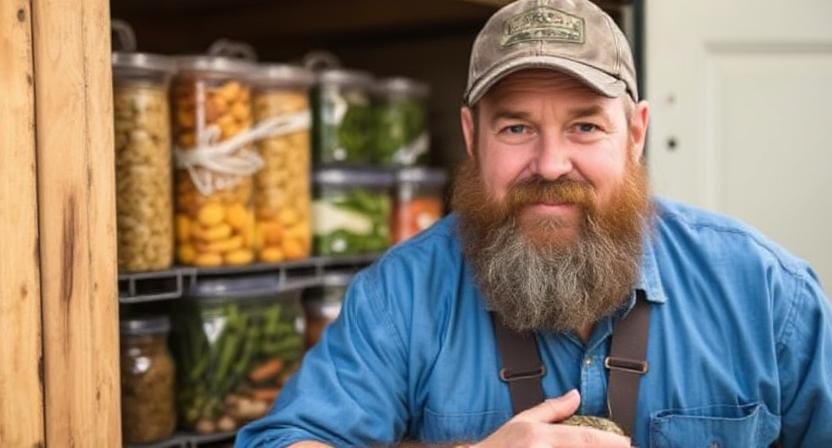
Now that we've put up our great food storage system, it would be smart not to leave it alone forever, like a weird middle school dancing partner.
It's very important to do regular maintenance inspections! Set aside time every few months (maybe every season?) to examine everything: make sure all containers are tightly sealed, look for signs of pests (spoiler alert: they're not cute), and check expiration dates.
During these check-ups, pay attention to any goods that are running short so you can restock them before something bad happens or before dinner guests show up unannounced and want gourmet meals created from whatever weird stuff you have on hand!
Also, change out your canned foods every now and then. Not just because it's fun, but also because freshness is important! No one wants tuna salad cooked with seafood that is older than their youngest child.
Adding Variety To Your Stockpile
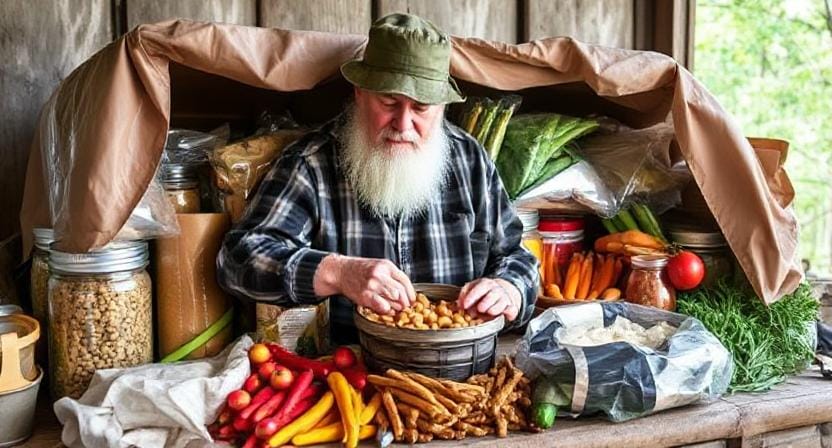
Variety is not only the spice of life, but it is also important for keeping spirits high when things are tough! If all you have in your pantry is rice and beans (which are good mainstays), you could get bored faster than you think when you have to make the same dish over and over again.
So change things up! Add various grains, like quinoa or barley, as well as legumes, like lentils and chickpeas. Canned fruits and veggies are great since they give color and nutrition. Don't forget about spices! A well-stocked pantry shouldn't feel like you're preparing for the end of the world. It should feel like you're getting ready for an amazing cooking expedition.
And don't forget to treat yourself to comfort foods every once in a while. A hoard of chocolate bars could help you stay positive when things become tough!
Conclusion: Embrace Your Inner Prepper Chef
Building a long-term food storage system sounds big, but trust me, it can be a lot of fun! Once you get rolling, you’ll feel like a pro. Imagine standing in your kitchen, feeling proud of all the goodies you’ve saved up.
Start with what you need. Think about what your family eats and loves. Do you all like pasta? Canned veggies? Snacks? Write it down. Getting organized from the beginning helps a lot.
Time to shop! Grab some nice containers. Buckets or jars work great. Make sure they’re sturdy and seal tight. You’ll be happy later, knowing your food is safe. It’s like a treasure chest for your meals!
Getting creative is the best part. When you have a good stockpile, it’s easy to whip up something tasty. You can mix and match ingredients to make yummy dishes. Think of the compliments you’ll get at potlucks! “You made this from what? Wow!”
Stay organized as you go. Label your containers. Little notes can go a long way. If you keep track of what you have, it’s much easier to know what to use first.
Don’t forget to check your food regularly. This keeps everything fresh. If something’s getting old, use it in a fun recipe. Maybe you’ll discover a new favorite dish along the way.
All of this truly helps me stop worrying about what to do if things go hard. You will be ready for anything! More time for enjoyment when you're less stressed. So, get your buckets out and get ready to cook. You will impress everyone and feel good about being ready.
Let's make cooking fun and keep the pantry full of tasty surprises. You've got this!
Frequently Asked Questions
What foods last longest in a long-term storage system?
Dry staples such as rice, oats, pasta, beans, and canned goods remain stable the longest when properly stored away from heat and moisture.
Why are airtight containers recommended?
They prevent oxygen, humidity, insects, and rodents from degrading food quality, extending shelf life significantly.
What storage environment is best for preventing spoilage?
A cool, dark, and dry location reduces oxidation and prevents growth of mold, bacteria, and pests.
How often should stored food be rotated?
Implement a first-in, first-out system and check dates every few months to avoid hidden expired items.
Should I include variety in my food storage?
Yes, a mix of grains, beans, proteins, canned produce, spices, and comfort foods helps maintain balanced nutrition and morale.
How much food should I store per person?
Amount varies by family size, calorie needs, and time horizon, but planning several months of basic staples is a strong starting point.
Do I need to label containers with dates?
Yes, labeling prevents confusion and makes rotation easier by tracking what was stored first.
Suggested Resources:
Emergency Food Storage & Survival Handbook
https://www.amazon.com/Emergency-Food-Storage-Survival-Handbook/dp/1616080801
Food Storage Made Easy
https://foodstoragemadeeasy.net/
The Ultimate Guide to Food Storage
https://www.thefamilyhomestead.com/the-ultimate-guide-to-food-storage/

Kevin Collier is a seasoned survivalist and expert in prepping and homesteading, contributing to WiseSurvive.com. With a deep-rooted passion for self-sufficiency and outdoor survival skills, Kevin shares practical advice, strategies, and resources to help individuals prepare for any challenge. His informative articles cover a range of topics, from essential survival techniques to sustainable living practices, empowering readers to thrive in any situation. Whether you're a novice or a seasoned prepper, Kevin's insights will inspire you to take charge of your readiness and build resilience for the future.



